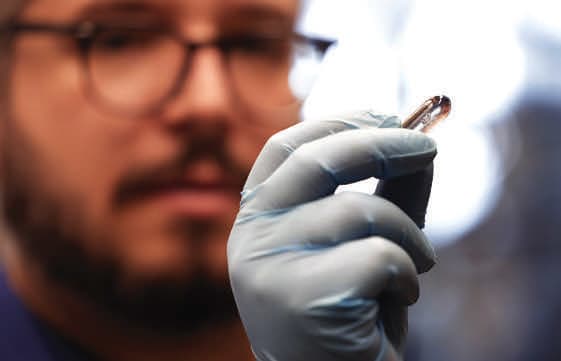Wireless Smart Glove

A new wireless smart textile technology developed at UBC in collaboration with Vancouver startup Texavie can boost hand mobility of stroke patients. The glove incorporates a sophisticated network of highly sensitive sensor yarns and pressure sensors that are woven into a comfortable stretchy fabric, enabling it to track, capture, and wirelessly transmit even the smallest hand and finger movements. With this glove, specialists can monitor patients’ hand and finger movements without the need for cameras as well as analyze and fine-tune their exercise programs for the best possible results. Using machine learning models, the glove can accurately determine the angles of all finger joints and the wrist as they move. The technology is highly precise and fast, capable of detecting small stretches and pressures and predicting movement with at least 99-percent accuracy. The team envisions potential applications in virtual reality and augmented reality, animation, and robotics.
Contact: Lou Corpuz-Bosshart
604-822-2048
This email address is being protected from spambots. You need JavaScript enabled to view it.
Metal-Free Magnetic Gel

Soft robots, medical devices and implants, and next-generation drug delivery methods could soon be guided with magnetism — thanks to a metal-free magnetic gel developed by researchers at the University of Michigan and the Max Planck Institute for Intelligent Systems in Stuttgart, Germany. The material is the first in which carbon-based, magnetic molecules are chemically bonded to the molecular network of a gel, creating a flexible, long-lived magnet for soft robotics. The team’s gel consists solely of carbon-based molecules. The key ingredient is TEMPO, a molecule with a “free” electron that is not paired up with another electron inside an atomic bond. The spin of every unpaired TEMPO electron in the gel aligns under a magnetic field, which attracts the gel to other magnetic materials. Today’s prototypes typically move with hydraulics or mechanical wires, which require the robot to be tethered to a power source or controller, also limiting where they can go. Magnets could unleash these robots, enabling them to be moved by magnetic fields.
Contact: Kate McAlpine
734-647-7087
This email address is being protected from spambots. You need JavaScript enabled to view it.
Dirt-Powered Fuel Cell

A Northwestern University-led team of researchers has developed a new fuel cell that harvests energy from microbes living in dirt. About the size of a standard paperback book, the completely soil-powered technology could fuel underground sensors used in precision agriculture and green infrastructure. This potentially could offer a sustainable, renewable alternative to batteries, which hold toxic, flammable chemicals that leach into the ground, are fraught with conflict-filled supply chains and contribute to the ever-growing problem of electronic waste. To test the new fuel cell, the researchers used it to power sensors measuring soil moisture and detecting touch, a capability that could be valuable for tracking passing animals. To enable wireless communications, the researchers also equipped the soil-powered sensor with a tiny antenna to transmit data to a neighboring base station by reflecting existing radio frequency signals. Not only did the fuel cell work in both wet and dry conditions, but its power also outlasted similar technologies by 120 percent.

